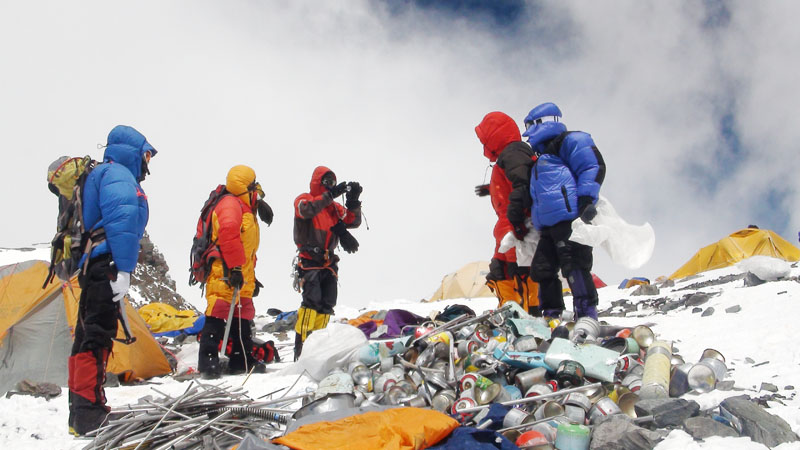Lesson from Everest waste
Five years ago, when 25-year-old Pasang Tshering Sherpa was invited to clean Mt Everest by his villager Pemba Tshering Sherpa, he laughed at the proposal. Little did he realise then that this proposal would pave the way for him to do something for the mountain and its Sherpa climbers.
A Thangka painter, Pasang has “always been passionate about working for the betterment” of his homeland. So, as he pondered upon Pemba’s invitation, he thought he would be “cleaning the Mt Everest for the world”. So, he agreed to be a part of the expedition as a volunteer in the Sagarmatha Pollution Control Committee.
Pasang, now 30 recalls, “Of the 24 people in the team, I was the youngest. I joined the team with cleaning the Everest as my motive, rather than summiting it. But I hadn’t taken any training on mountaineering till then.”
While people take training for weeks before daring to climb the Everest, Pasang kicked off his cleaning journey after just a “one-day training” at the Base Camp. “I learnt the basics of climbing from late Icefall Doctor Nima (he passed away in 2013),” shares Pasang, who also learnt from his seniors in the team who he followed.
Since Pasang’s job was to collect waste, the late Icefall doctor told him where to find the areas with waste deposits. He also taught him the techniques to remove the items from the mountain safely. Pasang and his team’s task was “to climb up to the South Col and bring back waste materials from that site”.
“I found different kinds of waste material on the mountain — pieces of iron, ropes, can bottles, shoes, clothes, meat, et cetera,” says Pasang, who made up to four trips a day to Camp 2 to bring down heavy loads of waste. Once he even reached to up to Camp 3.
Ascending this beautiful yet dangerous mountain is not an easy endeavour. And this expedition team had to do more than that — ascend, find waste, and descend with the waste. “The difficult part was to take out the frozen waste, it would take nearly three hours to take out one kg garbage from the snow,” Pasang recalls.
Before the expedition was complete, Pasang got injured at the Khumbu Icefall — “I sustained rib cage injury” and he had to leave the work without completing it. However, his team worked for more than a month and brought down about 10 tons of trash.
When Pasang first started the journey to clean the Everest, “I hadn’t imagined that we would be bringing town 10 tons of garbage.”
From among the waste collected from Mt Everest, he had taken home some items like Epigas and tin can. As he is an artist, he painted those items and displayed the same in his art gallery. One foreigner was interested in it “as it was made from the waste from the Everest”. Pasang fondly recalls, “He bought it for
Rs 3,000” and adds, “At that time I realised rubbish is money”. He also earned a sum of Rs 135,000 for his work. He now understands the
value of garbage, and thus, Pasang in future plans “to turn garbage into cash”.
While on the mountain, as he was cleaning Everest with others, he saw the hard work of people from the Sherpa community, they all were dedicated to make their clients happy. “It was when I felt I wanted to make those Sherpa people happy,” states Pasang. So, back home, he started asking the Sherpa climbers about their mountaineering experiences and published a book titled Sherpa: The Ultimate Mountaineers with his team’s help.
From the legends of the past to heroes of the present, the book documents the stories of more than 115 Sherpa climbers. From late Tenzing Norgay Sherpa to Pasang Lhamu Sherpa to one of the greatest living mountaineers Apa Sherpa, the book contains stories of heroes of the mountaineering world. It also contains information on different mountains of the world.
Being a part of the 2011 cleaning campaign, Pasang has learnt not only to earn money from garbage, but started a novel task of telling the stories of Sherpa mountaineers to the world.






